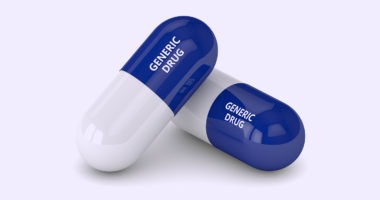2019: The Pharmaceutical Industry Year in Review
As 2019 comes to a close, what were the top news stories shaping the pharmaceutical industry? From mega acquisitions to deal-making in cell and gene therapies, to shifting supply lines from a still-to-be resolved Brexit and ongoing trade talks in China, DCAT Value Chain Insights provides a Top 10 ranking of the most impactful developments from 2019.
On Your Radar: The Top 10 News Stories from 2019
1. Bristol-Myers Squibb’s $74-billion acquisition of Celgene. Mega mergers represented a leading theme for the pharmaceutical industry in 2019 and on top of the list was the $74-billion acquisition of Celgene by Bristol-Myers Squibb. Announced in January 2019 and completed last month (November 2019), the newly combined company has eight products with more than $1 billion in annual sales in core disease areas of oncology, immunology and inflammation, and cardiovascular disease and near-term launch opportunities representing more than $15 billion in revenue potential, according to the companies. The companies expect to achieve $2.5 billion in cost synergies. Not included in the companies’ combined drug portfolios is Celgene’s blockbuster drug, Otezla (apremilast), a drug for treating moderate-to-severe plaque psoriasis and psoriatic arthritis. The companies divested the drug to Amgen for $13.4 billion last month (November 2019) as part of a condition for US Federal Trade Commission approval of the merger.
2. AbbVie’s pending $63-billion acquisition of Allergan. The number two mega merger in 2019 is AbbVie’s pending $63-billion acquisition of Allergan, a deal that was announced in June 2019 and is expected to close in early 2020. Once the deal closes, the combined company would have 2019 annual combined revenue of approximately $48 billion and consist of several franchises in immunology, hematologic oncology, medical aesthetics, neuroscience, women’s health, eye care and virology. The deal is important for AbbVie to position itself against near-term generic competition for its top-selling product, Humira (adalimumab), an anti-inflammatory drug approved for multiple indications in rheumatoid arthritis, juvenile idiopathic arthritis, psoriatic arthritis, ankylosing spondylitis, adult Crohn’s disease, ulcerative colitis and plaque psoriasis. Humira posted 2018 global sales of $19.9 billion. It is now facing direct biosimilar competition in Europe and other countries, which represent approximately 75% of AbbVie’s international Humira business or approximately 25% of total global Humira revenues, according to AbbVie’s annual 2018 financial filing. The drug faces US generic competition beginning in 2023. Overall, Humira accounted for 61% of AbbVie’s total revenue in 2018.
| Table I: DCAT Value Chain Insights Top 10 News Developments of 2019 | |
| Ranking | Deal |
| 1 | Bristol-Myers Squibb’s $74-billion acquisition of Celgene |
| 2 | AbbVie’s pending $63-billion acquisition of Allergan |
| 3 | Takeda’s $62-billion acquisition of Shire |
| 4 | The pending combination of Mylan and Pfizer’s generics and off-patent business to form Viatris |
| 5 | Investment in cell and gene therapies—pharma companies |
| 6 | Investment in cell and gene therapies capabilities—CDMOs/CMOs |
| 7 | Changing of the guard at the FDA and EMA |
| 8 | Global shifts: Brexit and China |
| 9 | API patent reform in the EU |
| 10 | Bolt-on acquisitions |
|
Source: Compiled by DCAT Value Chain Insights editorial staff using company information. |
|
3. Takeda’s $62-billion acquisition of Shire. Announced in 2018, Takeda completed its $62-billion of Shire in January 2019, making it the first mega merger of 2019. The deal created a new Top 10 pharma company with annual revenues of $30-plus billion. The deal gives Takeda both reward—increased product diversification and a larger footprint in the US—but also risk—$30.85 billion in new borrowing to finance the deal. Since closing the deal, Takeda has made selective divestments in non-core assets to reduce that debt, with the most notable being the divestment of Xiidra (lifitegrast ophthalmic solution), a prescription drug for treating dry eye, to Novartis in a $5.3-billion deal that included $3.4 billion upfront and up to $1.9 billion in potential milestone payments. The combined Takeda and Shire will achieve combined annual revenue exceeding $30 billion, which is mainly derived from the key business areas of oncology, gastroenterology (GI), neuroscience, rare diseases, and plasma-derived therapies and also a position in vaccines. With the acquisition of Shire, Takeda gained complementary positions in GI and neuroscience and provided it with positions in rare diseases and plasma-derived therapies to complement its existing position in oncology, an area that Takeda enhanced with its $5.1-billion acquisition of Ariad Pharmaceuticals in 2017. Takeda is gaining positions in rare diseases and plasma-derived therapies, a position that Shire strengthened through its $32-billion acquisition in 2016 of Baxalta, the biopharmaceutical company spun off from Baxter Healthcare.
4. The pending combination of Mylan and Pfizer’s generics and off-patent business to form Viatris. In August 2019, Mylan and Pfizer agreed to combine Mylan with Upjohn, Pfizer’s off-patent branded and generic established medicines business, to form a new pharmaceutical company. The new name of the company, Viatris, will be effective upon closing of the combination, which is expected to occur in mid-2020. The two companies will continue to operate as independent, separate organizations until close. The new company would have pro forma 2020 revenues of $19 billion to $20 billion.
For both Mylan and Pfizer, the deal represents the execution of previously announced plans or previous considerations for their companies. Last year (August 2018), Mylan, a generic-drug company, formed a strategic review committee to evaluate alternatives for its businesses following weak performance in its North American segment. Mylan, like other large generic-drug companies, faced increased pricing pressure and competition, particularly in the US market. For its part, Pfizer has been evaluating possible separation of its generics and established product business dating back to when the company was led by Ian Read, who stepped down as Chief Executive Officer (CEO) earlier this year (January 2019) with Albert Bourla, formerly the Chief Operating Officer of Pfizer, taking the role of CEO. Read, who also was former Chairman of Pfizer, has since transitioned to Executive Chairman of the company. Pfizer is now organized into three main areas: the Biopharmaceutical Group, which includes its prescription, innovator drugs; Upjohn, which includes its off-patent branded and generic established medicines business; and Consumer Healthcare, which includes its over-the-counter business.
5. Investment in cell and gene therapies—pharma companies. Although a niche modality, cell and gene therapies have been a recent active area of investment by pharmaceutical companies to add products to their pipelines and manufacturing capabilities. Facing limited manufacturing capacity, several of the large bio/pharmaceutical companies have added manufacturing capabilities for cell and gene therapies as part of larger-scale acquisitions.
Among the key deals are Roche’s pending $4.3-billion acquisition of Spark Therapeutics, a commercial gene-therapy company based in Philadelphia. The deal is still pending regulatory review, and Roche’s closing to acquire Spark’s shares was extended several times in 2019, mostly recently from November 25, 2019 to December 10, 2019. The acquisition would net Roche Spark’s commercial product, Luxturna (voretigene neparvovec-rzyl), a one-time gene-therapy product indicated for treating biallelic RPE65 mutation-associated retinal dystrophy, a rare form of inherited vision loss as well as a gene-therapy manufacturing facility.
Earlier this year (2019), Novartis acquired CELLforCURE, a CDMO of cell and gene therapies in Europe, from LFB, a French pharmaceutical company. The acquisition included a cell and gene manufacturing facility located outside of Paris in Les Ulis, France and the related adjacent land. The site joins Novartis’ network of cell and gene therapy sites that include sites in Morris Plains, New Jersey and Stein, Switzerland. In 2018, Novartis made a large play in gene therapy with its $8.9-billion acquisition of AveXis, a Bannockburn, Illinois-headquartered clinical-stage gene-therapy company. Earlier this year (April 2019), AveXis announced it had agreed to purchase an advanced biologics therapy manufacturing campus in Longmont, Colorado to expand its manufacturing capacity for its gene therapy, Zolgensma (onasemnogene abeparvovec-xioi).
Following its $11.9-billion acquisition in 2017 of Kite Pharma, a developer of cell therapies, Gilead announced plans earlier this year (July 2019) for a 67,000-square-foot facility in Oceanside, California for the development and manufacturing of viral vectors. Viral vectors are a starting material in the production of cell therapies. Kite’s facility will be constructed within an existing Gilead biologics operations facility in Oceanside and will become part of Kite’s commercial manufacturing network that includes sites in California, Maryland and the Netherlands.
With its $74-billion acquisition of Celgene, Bristol-Myers Squibb also gains cell-therapy manufacturing capabilities and product assets. In 2018, Celgene acquired Juno Therapeutics, a company developing cell therapies and immunotherapies, for $9 billion, which included a cell-therapy manufacturing center in Bothell, Washington. In February 2018, Celgene reported that it completed the first phase of a new immunotherapy manufacturing center for CAR T therapies at its Summit West campus in New Jersey.
In August 2019, Pfizer reported that it is investing an additional $500 million in the construction of its gene-therapy manufacturing facility in Sanford, North Carolina. Earlier this year, Pfizer completed the first phase of the expansion project at the facility in Sanford.
6. Investment in cell and gene therapies capabilities—CDMOs/CMOs. Adding capabilities in cell and gene therapy production has also been a target of certain contract development and manufacturing organizations/contract manufacturing organizations (CDMOs/CMOs). Key deals completed in 2019 to build manufacturing capabilities in cell and gene therapies are Catalent’s $1.2-billion acquisition of Paragon Bioservices, a Baltimore, Maryland-based contract provider of viral vector development and manufacturing services for gene therapies, and Thermo Fisher Scientific’s $1.7-billion acquisition of Brammer Bio, a CDMO of viral vector manufacturing for gene and cell therapies.
7. Changing of the guard at the FDA and the EMA. Organizational change at the top of the US Food and Drug Administration (FDA) was an important development in 2019 with FDA Commissioner Dr. Scott Gottlieb stepping down from his post in April and with his spot being filled on an interim basis by FDA Acting Commissioner Dr. Norman Sharpless, who served from April 5, 2019 to November 1, 2019. Under consideration now for the top position at the FDA is Dr. Stephen Hahn, Chief Medical Executive at the University of Texas MD Anderson Cancer Center in Houston, Texas and Professor in the Department of Radiation Oncology, Division of Radiation Oncology at MD Anderson. Hahn was nominated by President Donald Trump and the US Senate Committee on Health, Education, Labor & Pensions voted in favor of his confirmation; his confirmation now goes to the full Senate in a vote that is expected to occur before the end of 2019.
At the same time, the European Medicines Agency (EMA) is moving forward with plans to find a new Executive Director. The EMA issued a vacancy notice with the Official Journal of the European Union earlier this year (May 2019) for the position of Executive Director as the term of the current EMA Executive Director, Guido Rasi, is set to come to an end in November 2020. The new Executive Director will be the fourth in EMA’s history. Rasi has served two five-year terms as the EMA’s leader from 2011 to 2014 and will be completing his second five-year term in November 2020.
8. Global shifts: Brexit and China The still-to-be resolved withdrawal of the UK from the European Union (EU) (i.e., Brexit) and escalating trade friction with China were two broader policy issues with implications for the pharmaceutical industry in 2019.
Throughout the Brexit process, the UK pharmaceutical industry has maintained a position of the importance of the UK securing a deal to exit the EU, which has seen two missed deadlines for withdrawal: the original withdrawal date of March 29, 2019, an extended withdrawal date of October 31, 2019, and now a further extension provided by the EU to the UK until January 31, 2020. UK Prime Minister Boris Johnson negotiated a new Brexit deal with the EU after taking over as Prime Minister from former Prime MinisterTheresa May, who resigned in 2019 following several unsuccessful attempts to gain approval by the UK Parliament of her negotiated Brexit deal with the EU. Now Johnson faces the same issue as he awaits a general election on December 12, 2019, designed as a vote of confidence and signal of support for his Brexit deal. The outcome of the general election will be a crucial test on how Brexit proceeds or not and whether the UK would exit the EU with a deal or not.
The UK pharmaceutical industry supports a Brexit deal to mitigate supply disruptions if the UK were to leave the EU without a deal. Of the 12,300 medicines used in the UK, the UK estimates that around 7,000 come from or via the EU and the vast majority use the short Channel crossings (i.e., crossings between the English Channel and Continental Europe). More than half the clinical consumables the UK uses come from or via the EU, and the vast majority use the short Channel crossings. Also, half of all supplies for clinical trials come from or via the EU, and half of those (25% of the total) come through the short Channel crossings.
Trade talks with China represents another geopolitical concern with potential implications for the pharmaceutical industry. While the bio/pharma industry has largely not been targeted with tariffs or other trade barriers in recent trade actions, the industry potentially has risk because of its broad global network of manufacturing sites and suppliers. An upcoming date of importance for trade negotiations between the US and China is December 15, when US tariffs are set to rise, and as the two sides work to avoid that increase in a Phase-One deal that would guarantee China’s purchases of US agricultural goods and exactly which tariffs to roll back under a new deal.
9. API patent reform in the EU. In a much-debated move, the European Union adopted earlier this year (2019) manufacturing waivers to supplementary protection certificates (SPCs), a move supported by generics and biosimilars producers and active pharmaceutical ingredient (API) manufacturers. The manufacturing waiver for SPCs has been the subject of great debate between the generics/biosimilars industry and innovator drug companies. The purpose of the original EU legislation that authorized SPCs, which was enacted in 1992, was to recompense product-development companies for the time taken to obtain regulatory approval of their medicines and give them longer market exclusivity in the form of a SPC. The SPC regulation, however, according to some, had the unintended effect of putting the European generic-drug, biosimilar, and API manufacturing industries at a competitive disadvantage vis-à-vis manufacturers producing in non-EU countries where no similar patent/SPC protection exists.
The European Parliament approved the SPC manufacturing waiver in April 2019, and the European Council formally adopted the measure in May 2019. The waiver came into force in July 2019, and companies will be able to start manufacturing under the waiver from July 2022.
The adoption of the new regulation for an SPC manufacturing waiver entitles EU-based companies to manufacture a generic or biosimilar version of an SPC-protected medicine during the term of the certificate, if done either for the purpose of exporting to a non-EU market where protection has expired or never existed, or for stockpiling during the final six months of an SPC ahead of entry into the EU market. Generic and biosimilar makers will be required to notify authorities before they start production of their products at least three months in advance, meet labeling obligations to ensure that their products are not diverted to the EU, and inform their supply chains that the products are covered by the waiver and cannot be sold in the EU market before the Day-1 entry, according to information from the European Parliament.
10. Bolt-on acquisitions. While mega mergers dominated the news in 2019, several pharmaceutical companies made key smaller acquisitions to build their pipelines and commercial portfolios. In July, Pfizer completed its acquisition of Array Biopharma, a Boulder, Colorado-based commercial-stage biopharmaceutical company for $11.4 billion. Array Biopharma is focused on the development of small molecules for cancer and other diseases.
Eli Lilly and Company also made a deal to bolster its oncology drug portfolio with its $8-billion acquisition of Loxo Oncology, a Stamford, Connecticut-based biopharmaceutical company, in a deal completed in February 2019. Loxo Oncology is focused on the development and commercialization of medicines for patients with genomically defined cancers. With the acquisition, Lilly gained Loxo’s Vitrakvi (larotrectinib), a treatment for adult and pediatric patients whose cancers have a specific genetic feature (biomarker). The FDA approved the drug in November 2018, marking at that time, only the second time that the FDA had approved a cancer treatment based on a common biomarker across different types of tumors rather than the location in the body where the tumor originated.
GlaxoSmithKline also added to its oncology drug portfolio as well with its $5.1-billion acquisition of Tesaro, an oncology-focused company based in Waltham, Massachusetts. The deal, which was announced in December 2018, was completed in January 2019. Tesaro is a commercial-stage biopharmaceutical company, with a marketed product, Zejula (niraparib), an oral poly ADP ribose polymerase (PARP) inhibitor, which is approved for use in ovarian cancer. Zejula is approved in the US and Europe as a treatment for adult patients with recurrent ovarian cancer who are in response to platinum-based chemotherapy, regardless of BRCA mutation or biomarker status. The drug is slated by some analysts as a potential blockbuster drug.
In July 2019, Merck & Co. acquired Peloton Therapeutics, a clinical-stage biopharmaceutical company focused on the development of small-molecule therapeutic candidates targeting hypoxia-inducible factor-2α (HIF-2α) for the treatment of patients with cancer and other non-oncology diseases. Peloton’s lead candidate, MK-6482 is an oral HIF-2α inhibitor in late-stage development for renal cell carcinoma. Merck made an upfront payment of $1.2 billion in cash; additionally, former Peloton shareholders will be eligible to receive $50 million upon US regulatory approval, $50 million upon first commercial sale in the US and up to $1.05 billion of sales-based milestones.
Outside of oncology, last month (November 2019), Novartis agreed to acquire The Medicines Company, a biopharmaceutical company focused on cardiovascular diseases, for $9.7 billion. With the acquisition, Novartis would gain The Medicines Company’s investigational twice-yearly administered therapy in Phase III clinical development, inclisiran, for treating atherosclerotic heart disease and familial hypercholesterolemia, which results in high levels of low-density lipoprotein cholesterol (LDL-C). Inclisiran is a small interfering RNA (siRNA) therapy being studied to evaluate its ability to lower LDL-C. The transaction is expected to close in the first quarter of 2020.








